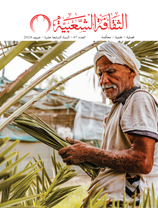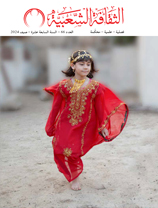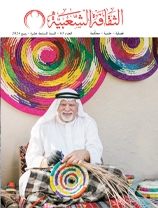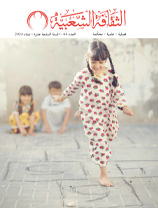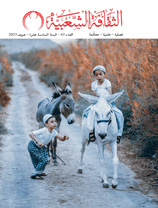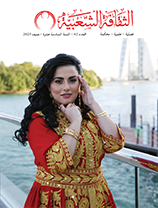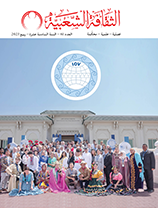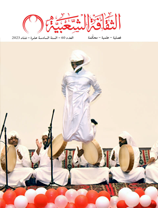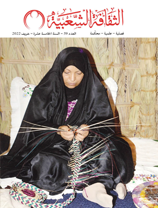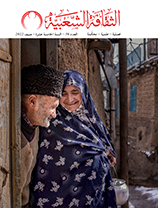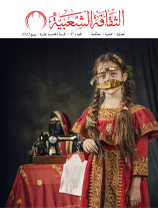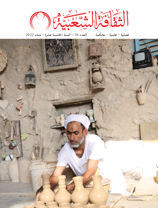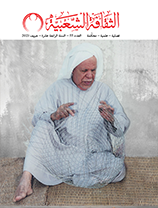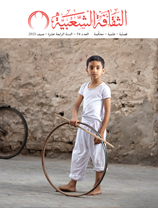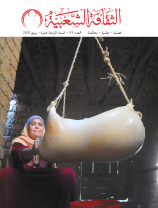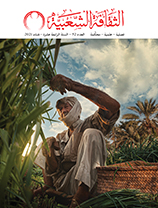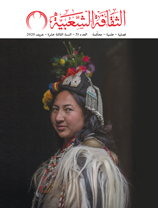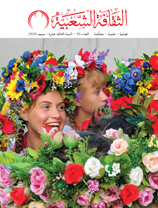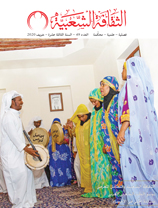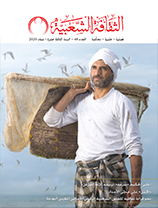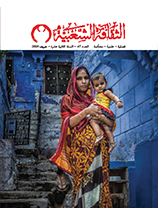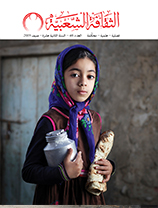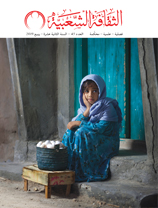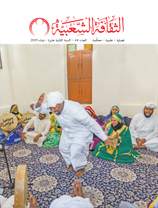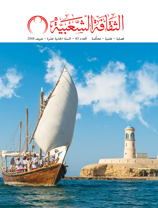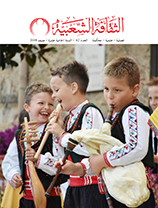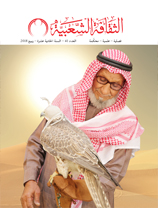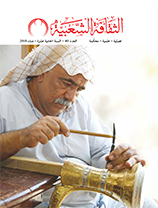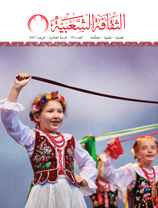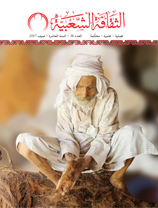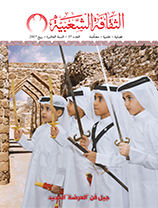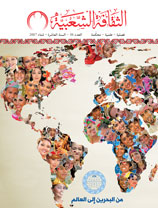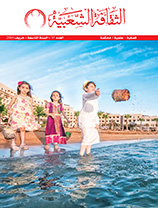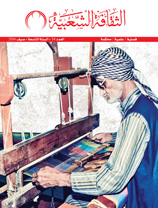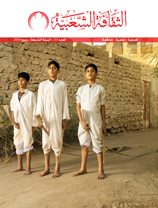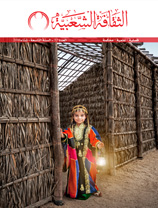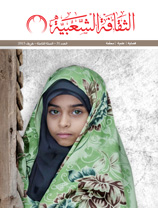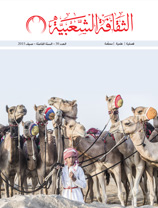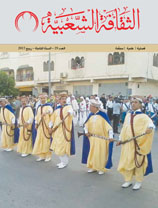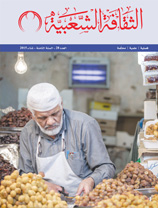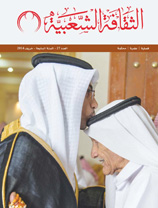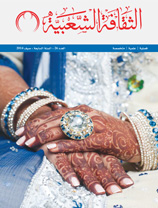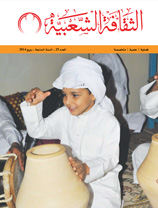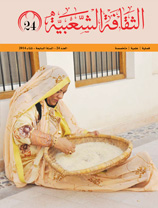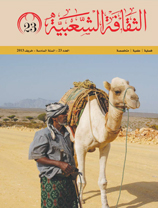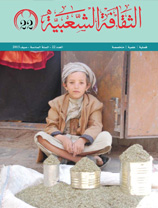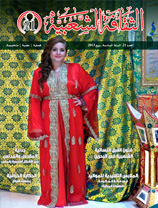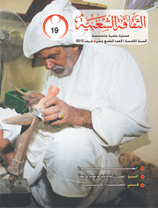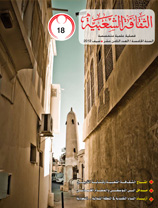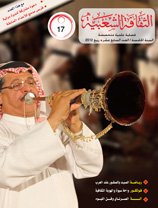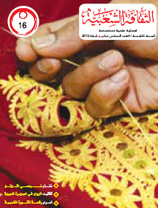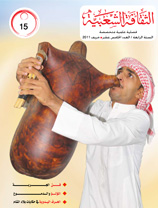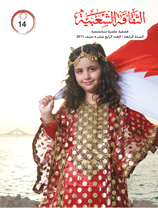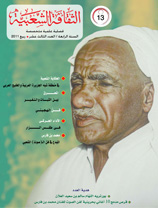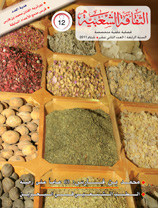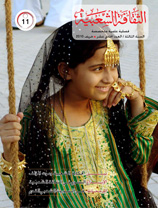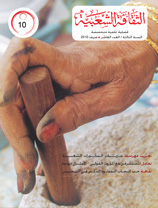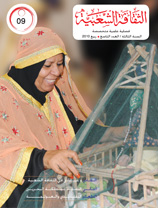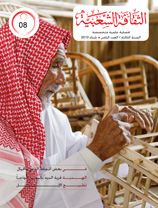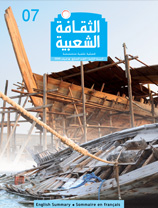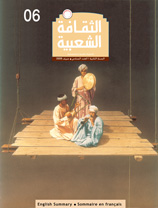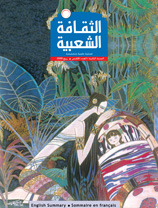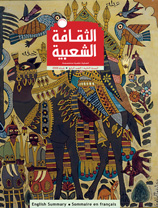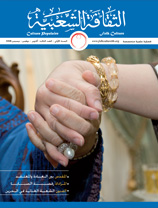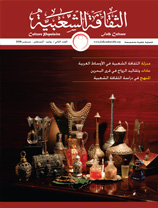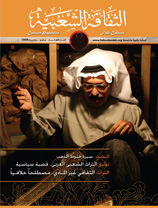The Purposes of Folk Poetry
Issue 6
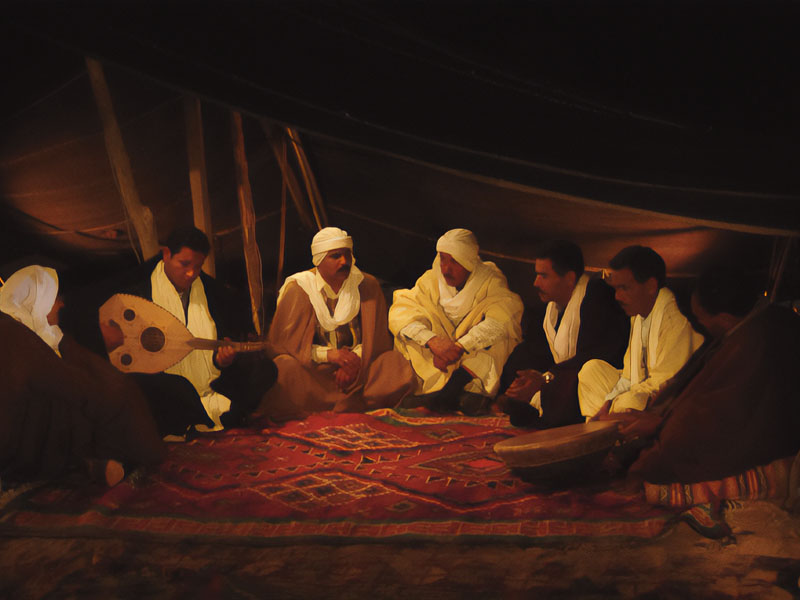
Mohyiddin Khraif - Tunisia
Its roots are extended to Bani Hilal who settled Kairaoun in the year 1057, and from the Hilali poetry, which Ibn Khaldun cited in his Muqaddimah some models from it, emerged the Tunisian popular poetry, which had a vertical structure with a first and second hemistiches, but the rhythms were different because the Tunisian dialect is different from other dialects. The measures of the popular poetry go back to four bases: the ‘qasiim’ (partaker) - position - gun – ‘malzuumat’ (obligated). As for the purposes of the popular poetry, they are different depending on the topic, but we can cite the erotic (flirtation) “green” one, in which every poet has his own different doctrine. Erotic poetry is divided into two sections:
1) Descriptive: the poet starts by a description of the beloved qualities, starting from the hair that looks like feathers of the “crow” when it shakes its wings to fly, or represented by feathers of the ostrich male. He then follows the description of the hair starting from the sideburns, forelock, and vice versa. He then described the forehead like a wire, which shines so far away almost dazzling sights. The face is compared to the moon. Eyebrows are like the a or lines in a slate for memorizing the Koran. The eyes are compared to bayonets “a sort of arms”, to the eyes of the eagle when it attacks its prey, and to the eyes of the gazelle. The eyelashes are compared with the night darkness, the cheeks with flowers and “windflower”, the nose with the eagle when attacking ostrich eggs from the top, the lips with red silk belts, the teeth with a pearl necklace, the neck with a shining crystal, the large chest including the breasts with two pomegranates, the abdomen like that of a fat horse where the meat and the grease are lowered down to the legs, and he compared them to two pillars of a king’s great palace.
2) The second type of flirtation is the impressionist one that expresses the feelings of the poet towards his lover. The poet complains about the hurts he suffers from, and composes poetry that comes off the word hurt The second purpose is the description, namely the description of the nature that includes “lightning” and “shallow” The lightning is followed by a description of the rain, thirsty earth, and the joy of the people by the rain fall that greenish the land and make birds smile. The “shallow” is a description of the desert including its animals, birds, terror, loneliness, and the horse he rides.





